A History of the County of Berkshire: Volume 3. Originally published by Victoria County History, London, 1923.
This free content was digitised by double rekeying. All rights reserved.
'Parishes: Streatley', in A History of the County of Berkshire: Volume 3, ed. P H Ditchfield, William Page (London, 1923), British History Online https://prod.british-history.ac.uk/vch/berks/vol3/pp511-516 [accessed 19 April 2025].
'Parishes: Streatley', in A History of the County of Berkshire: Volume 3. Edited by P H Ditchfield, William Page (London, 1923), British History Online, accessed April 19, 2025, https://prod.british-history.ac.uk/vch/berks/vol3/pp511-516.
"Parishes: Streatley". A History of the County of Berkshire: Volume 3. Ed. P H Ditchfield, William Page (London, 1923), British History Online. Web. 19 April 2025. https://prod.british-history.ac.uk/vch/berks/vol3/pp511-516.
In this section
STREATLEY
Stretlea (vii cent.); Estralei (xi cent.); Stratteleya (xii cent.); Stradleia, Stradleigh, Stratle (xiii cent.); Stretle, Stretlegh, Stretley (xiii–xvi cent.); Stretelee (xiv–xv cent.); Streatley (xvi cent.); Straightley (xvii cent.); Stretely, Strettley (xviii cent.).
The village of Streatley lies on the right bank of the Thames where travellers along the Icknield Way formerly crossed the river by means of a raised causeway, traces of which are still visible, (fn. 1) and subsequently by a ferry owned by the Prioress of Goring (fn. 2) and renewed in 1719 by royal grant to Richard Butler of Streatley. (fn. 3) At present a wooden bridge erected in 1838 (fn. 4) connects the village with Goring on the Oxfordshire side, where is the nearest station on the Great Western railway. Part of the water-mill near the bridge and most of the bridge itself lie in Goring parish and Oxford country. (fn. 5) The mill represents one which was the gift of William de Mandeville, third Earl of Essex and lord of Streatley Manor, to Goring Priory at some date before 1181, (fn. 6) and was probably indentical with one of two mills recorded in Domesday Book. (fn. 7) The priory held both mills in Streatley at the time of its suppression. (fn. 8) They were purchased from the Crown by Giles and Gregory Iseham in 1546, (fn. 9) and were sold in 1646 by George Tattersall, a delinquent, to Francis Fettiplace. (fn. 10) The site of the second mill is marked by 'Mill Close' at the south-eastern end of the parish. (fn. 11)
The village is picturesquely built about the Icknield Way at its junction with the main road from Wallingford to Reading. The church lies near the river to the north of the village street, and to the south of the street is Streatley House, the residence of Mrs. G. H. Morrell, which represents the Rectory estate. Rectory Farm, now Thurle Grange, formerly belonged to the Pusey family and was bought by Capt. T. J. Bowles, from whom it passed to Mr. Powys-Libbe. At the extreme west of the main street is Place Farm with its ancient dovecot, possibly the site of the original manor-house, (fn. 12) and near it are the schools which date from 1834. (fn. 13) Zion (Baptist) chapel is in Combe Bottom, just beyond the village. Streatley Farm, about three-quarters of a mile to the north of the church upon the Wallingford road, is a good early 17th-century house of brick, two stories in height, with three gables on the entrance front. The original square well staircase, with massive ball-crowned newels, remains, but generally the interior has been largely modernized.
The Berkshire Downs rise steeply to the west of the village and Thurle Down marks the north-western boundary of the parish. The subsoil of the greater part of the parish is chalk, and the soil is chalk and loam. There are several sarsen stones. Tradition relates that one of these was thrown into Kiddington Bottom by a giant of Aldworth, who left the print of his hand upon it. (fn. 14) The whole parish contains 3,655 acres, of which 1,690 are arable, 229 woodland, and 1,528 grass. (fn. 15) The latter includes the Thames meadows, which are often flooded. The common fields were inclosed in 1815–17 under an award of 1814. (fn. 16) There are outlying hamlets at Westridge, Southridge and Hungerford Green, and the beauty of the country has of late increased its popularity as a residential district. At Childe Court, an old half-timber farm building adapted as a parish reading room in 1898, is a sundial stand brought from Blackfriars Bridge, erected in 1769 and demolished in 1867. (fn. 17) The names of some of the outlying farms can be traced at an early date. Thus the endowment charter of the vicarage in 1215 mentioned the tithes of all the lands held by Richard Golde and Emma de Kettindon. Kiddington Farm was forfeited by John Earl of Lincoln (fn. 18) and granted in 1514 to Robert Stanshawe, groom of the chamber, whose father was the tenant. (fn. 19) Gould's Farm, near Westridge, is evidently connected with the Goldes, one of whom, perhaps the widow of the Richard mentioned above, received land for her maintenance from Hawise Countess of Aumale. (fn. 20) Under the name of College Farm it has lately been bought from Corpus Christi College, Oxford, by Major Morrison of Basildon. Runsford Meadow marks the site of a ford mentioned in a chartulary of the time of king Stephen, and possibly in existence as early as 891. (fn. 21)
There are numerous traces of the early settlement of Streatley. Neolithic flint implements have been found at the base of Streatley Hill, (fn. 22) and two urns of the Bronze Age have been found in the Thames near the village. (fn. 23) Grim's Dyke can be clearly traced in the south of the parish, where it forms the boundary line. (fn. 24) It has been stated that signs of entrenchment can still be noted on the east and north of the village. (fn. 25) There are some earthworks, possibly a camp, at the north-west angle of the parish near Unhill Wood. Two Roman milestones were formerly to be seen between Streatley and Aldworth. (fn. 26) Numerous relics found on Streatley Farm, especially in the inclosure called Fifield, including foundations of buildings, pottery and coins, were described by Sir Richard Colt-Hoare as Roman, but the cemetery on Southbury Farm was assigned by Mr. Akerman to the Anglo-Saxon period. (fn. 27)
Fifteen, or possibly twenty-five, hides of land at Streatley were said by the monks of Abingdon to have been given by Eadfrith son of Iddi to Hean the Abbot and to Ceolswith his sister for the endowment of a monastery which Hean intended to build at Bradfield. According to the same tradition the gift was confirmed by King Ceadwalla, and about 689 by his successor Ini, but Ini afterwards annulled this grant, and the site of the monastery was fixed at Abingdon. (fn. 28)
MANORS
In the time of Edward the Confessor STREATLEY was assessed at 25 hides. It was held of the king by Asgar the Staller, and was acquired after the Conquest by Geoffrey de Mandeville. (fn. 29) It descended to his great-grandson William de Mandeville third Earl of Essex. (fn. 30) His widow Hawise held the manor in dower, (fn. 31) and in April 1200 she, together with her third husband, Baldwin de Béthune Earl of Aumale in her right, (fn. 32) received a grant of 100 acres in Streatley quit of regard of forest. (fn. 33) This land was to revert to Geoffrey Fitz Piers, the chief justiciar and fourth Earl of Essex, who had married Beatrice de Say, granddaughter of Beatrice de Say, who was aunt to the third earl. (fn. 34) The Countess of Aumale died on 11 March 1213–14, (fn. 35) and in 1218 Maud de Say, sister-in-law of Geoffrey Fitz Piers, sought against his younger son and ultimate heir, William de Mandeville sixth Earl of Essex, a moiety of the Mandeville inheritance, including half the manor of Streatley. (fn. 36) The whole manor, however, was evidently included in the portion of the Mandeville inheritance retained by William de Mandeville, and in 1284 William de Say, the direct descendant of Geoffrey, younger son of William de Say and Beatrice de Mandeville, (fn. 37) released all claim in Streatley to Humphrey de Bohun Earl of Hereford and Essex, (fn. 38) the heir of Earl William. (fn. 39) In 1222 the latter had rebuilt his house at Streatley. (fn. 40) It was probably between this date and his death in 1227 that he enfeoffed his sister Hawise of the manor. (fn. 41) She married Reginald de Mohun, lord of Dunster (co. Somers.) and chief justice of the forests south of Trent. (fn. 42) He had licence in 1233 to cut oaks in his wood at Tymeworth for his house at Streatley. (fn. 43) He survived his wife, and during his lifetime the manor was held by William le Fleming, (fn. 44) who was evidently a sub-tenant, probably for life only. (fn. 45) In 1260 William le Fleming impleaded Nicholas and Richard de Hanreth for beating his carpenter Walter Samnel at Streatley Manor so that he died. (fn. 46) John de Mohun, grandson and heir of Reginald and Hawise, had evidently succeeded William le Fleming before September 1273, when he was impleaded by Humphrey de Bohun Earl of Hereford and Essex, son and heir of Maud, another sister of William de Mandeville sixth Earl of Essex, concerning a messuage and 3 carucates of land in Streatley. (fn. 47) The plea was adjourned till Easter 1274, (fn. 48) and in the meantime the parties came to an agreement whereby the earl recognized the right of Mohun in the messuage and 3 carucates, and it was agreed that the whole manor (except a messuage with 1 virgate of land, and a fishery formerly held by William de Blewbury) should be held by the earl and his countess Maud for their lives of John de Mohun and his heirs by service of a clove gillyflower yearly. The manor was then to revert to John and his heirs to hold of the heirs of the earl by the service of £20 yearly and one-quarter of a knight's fee. (fn. 49) The earl died on 24 September 1275. (fn. 50) His descendants had some difficulty in securing the payment of the rent of £20 due from the manor. (fn. 51) The knight's service due to them is recorded, (fn. 52) until it was evidently vested in the Crown through the marriage of Mary daughter and co-heir of Humphrey twelfth Earl of Hereford with Henry, afterwards Henry IV, (fn. 53) when it was attached to the honour of Wallingford. (fn. 54) During the minority of John son and heir of John de Mohun (fn. 55) the manor was apparently in the custody of Humphrey Earl of Hereford, son of the last-named earl, since in 1283 he was charged with withdrawing the service of his villeins there from the king's hundred, (fn. 56) and in 1284 he acquired from William de Say the release mentioned above. This John de Mohun was summoned to Parliament as Lord Mohun in February 1298–9, (fn. 57) and was in possession of Streatley in 1305, when he made settlement of the manor on the marriage of his eldest son John with Christian daughter of John de Segrave, lord of Segrave. (fn. 58) In the time of John Lord Mohun, son and heir of John and Christian, (fn. 59) the manor was held for a term of years by Walter de Chiriton, (fn. 60) a citizen and merchant of London. (fn. 61) Apparently he sublet to Robert de Chiriton, since it was against Robert that the Earl of Hereford brought a plea for rent due in 1349. (fn. 62) The lands of Walter de Chiriton were seized for his debts to the Crown, and his interest in Streatley was granted to Sir John de Mohun in May 1357. (fn. 63) He had entailed his reversionary interest upon his wife Joan and his heirs by her in 1348. (fn. 64) He was in possession in 1372, (fn. 65) shortly before his death, (fn. 66) and in 1383 William son of Walter de Chiriton released all claim in the manor to William de Wykeham, Bishop of Winchester, and others, (fn. 67) who were probably acting for the widow, Joan Lady Mohun. She had by Sir John Mohun three daughters, (fn. 68) of whom one, Philippa wife of Edward (Plantagenet) Duke of York, was holding Streatley in 1428, (fn. 69) and in 1431 conveyed to John Knight and others in trust. (fn. 70) Probably her intention was to sell the manor. In 1437 her nephew and heir Richard Strange of Knockin, who became Lord Mohun upon her death, (fn. 71) sold his rights to John Pury, (fn. 72) evidently an agent for William de la Pole Earl, and afterwards Duke, of Suffolk. (fn. 73) A rent of £20 reserved by Lord Strange was subsequently released by him to Pury and others, (fn. 74) and in May 1443 John Knight released to De la Pole all his interest in the manor. (fn. 75) He paid £200 for a further assurance of his title from Lord Strange and his second wife Elizabeth about 1449. (fn. 76) He was in possession of Streatley in May 1450, (fn. 77) when he fell a victim to the popular fury during Jack Cade's rebellion. Settlement had been made on his wife Alice, who survived until 1475. (fn. 78) By the attainder of their grandson John Earl of Lincoln, slain in the insurrection of 1487, the manor was forfeit to the Crown, (fn. 79) and in April 1488 it was given by Henry VII to Robert Staunton, one of the squires of the body, for life. (fn. 80) In the following March grant was made to George (Stanley) Lord Strange, (fn. 81) who had married Joan granddaughter and ultimate heir to the Richard Lord Strange who had sold his rights in 1437. (fn. 82) His son Thomas Earl of Derby pledged this manor to the Crown for payment of his debts, (fn. 83) and it was also security for sums due from his son Edward Earl of Derby, including a fine due for the occupation of the Isle of Man. (fn. 84) Ferdinando his grandson, Earl of Derby and lord of the Isle of Man, died seised of the manor 16 April 1594, (fn. 85) and his brother and heir male sold it to Richard Lee in 1596. (fn. 86) Henry Samborne the elder with his son Henry, afterwards knighted, purchased the rights of Richard Lee and also those of Henry Hurlowe and his wife Margaret in 1606. (fn. 87) They afterwards acquired from the Crown the reversionary title contingent upon the failure of the heirs male of George Lord Strange, (fn. 88) and in 1637 Sir Henry let the manor on a ninety-nine years' lease to John Warner, Dean of Lichfield. (fn. 89) The manor descended in the Samborne family with Moulsford (q.v.), and in 1668 both were purchased by Anthony Libbe of Hardwick (co. Oxon.). (fn. 90) As in the case of Moulsford, it was divided into several portions early in the 18th century. One moiety was acquired by the Rush family. In 1719 Samuel Rush the younger and his wife Sarah and Richard Butler and his wife Mary conveyed to John Shepherd and John Rush a messuage, lands and fishery in Streatley. (fn. 91) John Rush became Sheriff of Berkshire and was knighted in 1724. (fn. 92) He held a moiety of the manor and lived in Streatley. (fn. 93) He was succeeded by his son Samuel, who died in 1774. (fn. 94) John Rush, his successor, was dealing with a moiety of the manor in 1784–7. (fn. 95) It was purchased from him or from some other member of the Rush family by Richard Palmer of Holme Park, near Sonning, (fn. 96) who also acquired the remaining portions of the manor. One quarter had apparently been purchased in 1781 by his father, Robert Palmer of Great Russell Street, Bloomsbury, from Joseph Bailey and his wife Martha. (fn. 97) This was apparently the moiety with which Henry Bailey the elder and the younger were dealing in 1711. (fn. 98) A portion of the manor had also been the property of the White and Predy families early in the 18th century. (fn. 99) Richard Palmer sold the whole manor in 1804 to the trustees of Thomas Bowles of Milton Hill, then a minor. (fn. 100) From him it has descended to his grandson Colonel Thomas John Bowles of Streatley, the present owner. (fn. 101)
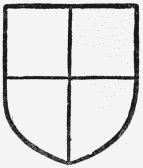
Mandeville. Quarterly or and gules.
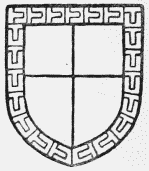
Fitz Piers. Quarterly or and gules with a border vair.
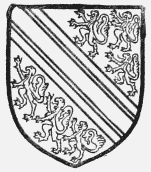
Bohun. Azure a bend argent between two cotises and six lions or.
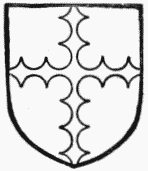
Mohun. Or a cross engrailed sable.
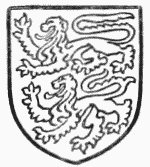
Strange. Gules two lions passant argent.
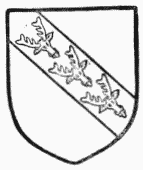
Stanley. Argent a bend azure with three harts' heads cabossed or thereon.

Bowles. Azure three cups argent with a boar's head or in the bowl of each.
Westridge, the residence of the present lord of the manor, was included in the estate sold by Richard Palmer in 1804. (fn. 102)
The Earl of Hereford had free warren in Streatley in 1275. (fn. 103) During the 18th century a free fishery was appurtenant to the manor, (fn. 104) and a fishery was included in the lands conveyed to John Shepherd and John Rush in 1719. (fn. 105) The existence of two fisheries had been recorded in 1086. (fn. 106) Possibly the one is represented by a fishery held by William de Blewbury about 1272, (fn. 107) which was excepted from the agreement between the Earl of Hereford and John de Mohun in 1273, (fn. 108) and was apparently in the possession of the Aldrington family about 1362. (fn. 109) It was settled on John Chilford and his wife Elizabeth in 1383, (fn. 110) and was conveyed in 1407 to Thomas Attwater and his wife Joan by Richard Wyot and John Scot. (fn. 111) Possibly this was the fishery of which Joan wife of Simon Raleigh died seised in January 1465–6. (fn. 112) The second fishery was acquired by Goring Priory, (fn. 113) and was probably appurtenant to its mills. (fn. 114) A fishery at Streatley was conveyed with Basildon Manor to John Lambe and Edward Whistler in 1621–2. (fn. 115) It was subsequently acquired by Edward Allen, (fn. 116) and became attached to the rectory (q.v.). Richard Parsley and his wife Mary conveyed a fishery to Richard Novice and his wife Joan in 1633–4. (fn. 117)
The so-called manor of SOUTHRIDGE was the property of the Tull family early in the 18th century or possibly before. (fn. 118) Mr. Richard Tull was a benefactor of the parish about 1716. (fn. 119) Mrs. Mary Tull claimed the soil of all waste grounds, and John Tull claimed tithe, of Southridge in 1813. (fn. 120) Finally the estate was sold to Henry Tull by the widow of John Tull, his elder brother's son. Mr. Henry Tull died in 1876, having bequeathed Southridge to his wife Elizabeth Mary Tull, who afterwards married Mr. James Breach. He died in 1903, and after the death of Mrs. Breach it was purchased by its present owner, Major Morrison. (fn. 121)
CHURCH
The church of ST. MARY consists of a chancel, nave, north and south aisles, north vestry, south porch, and 15th-century west tower.
The church was rebuilt, with the exception of the 15th-century tower, in 1865. The original building was chiefly of the 13th century, and has been more or less reproduced in the present structure, some of the old detail being re-used. The modern details are in yellow Bath stone, the old stones being of a lighter colour. The contrast thus afforded has apparently suggested the employment of alternate bands of white and yellow stone throughout the chancel arch and nave arcades.
The lancets lighting the chancel on the north are partly of original 13th-century date. The chancel arch is of two moulded orders incorporating some early 13th-century voussoirs; the responds of the inner order are semicircular and have foliated capitals, that on the south being of original early 13th-century date. The jambs of the outer order have angle shafts with foliated capitals of the same date. The east respond of the north arcade of the nave, and the west respond of the south arcade, have original 13th century plain moulded bell capitals, from which the new capitals have been copied. A few of the voussoirs appear to be old.
The west tower of three stages is of the 15th century. There is a diagonal buttress at the north-west angle, and at the south-west angle are two buttresses running west and south, an arrangement probably dictated by the original position of the stair turret at the south end of the west wall. The doorways formerly opening out of it are still visible internally. At the north-east and north-west of the tower are buttresses running north and south. The present stair turret, constructed at the rebuilding of the church, is on the south side, abutting upon the east buttress of this wall. The west window of the ground stage is modern. The ringing chamber has two small original square-headed openings on the north and west sides. The bell-chamber is lighted on the north, west, and south by square-headed windows of two uncusped lights. The parapet is embattled. The trusses of the nave roof, which was shored up during the rebuilding and not taken down, are of 14th-century date, though much repaired. They have moulded tie-beams and collars supported by curved braces. The roofs are covered externally with tiles, and are all of high pitch.
In the pavement at the east end of the north aisle is a brass inscription to Elizabeth Prout, 1440, daughter of Richard Osbarne of Streatley and wife of John Prout, merchant of the Calais Staple. Four other brasses were formerly in the chancel. The figure of Elizabeth wife of William Berington, 1570, is now laid with the brass above-named, and its proper inscription is lost. On the east wall of the south aisle is an inscription to Thomas Berington of Streatley (d. 1603) (son and heir of William Berington, third son of Robert Berington of Hereford), his wife Joan Wier, six sons, all of whom predeceased him, and eleven daughters. In the pavement below it are their two figures, and above their heads, in the corners of the slab, are two shields, the first with sable three running greyhounds or, and a molet for difference (Berington of Streatley), the second with a fesse dancetty between three crosslets fitchy. The brass of Thomas Clarke of Streatley (d. 1600) and Elizabeth his wife (d. 1598) with their figures, and with small figures of their son Griffith and their daughters Agnes, Elizabeth, and Margaret, was left in situ 5 ft. beneath the present floor. The figure from the brass of their son, here called Griffin Clarke, who died in 1583, is in the vestry, but its inscription is lost.
There is a peal of six bells: the treble is by R. Phelps & Lester, 1738; the second bears an inscription formed of letters selected at random, with the date 1649; the third is by Henry Knight, inscribed 'H. K. 1661,' with the mark of the Knights between the H and the K; the fourth is by R. Phelps, 1737; the fifth by Mears & Stainbank, 1887; the tenor is inscribed, 'Feare God, 1649.' Hanging in the ground stage of the tower, and no longer in use, is a small bell, probably the sanctus bell, inscribed in black letter, 'Hac in conclave Gabriel nunc pange suave.' The bell is probably of the early 16th century.
The communion plate consists of a cup bearing the date letter of 1716 and inscribed, 'John House, churchwarden, 1717,' and a paten bearing the date letter of 1715 and inscribed, 'The gift of Richard Tull to the parish of Streatley, Berks., 1716.'

Streatley Church: 15th-Century West Tower
The registers previous to 1812 are as follows: (i) baptisms and burials 1679 to 1812, marriages 1679 to 1754; (ii) marriages 1754 to 1805; (iii) marriages 1806 to 1812.
ADVOWSON
A church existed in 1086, when Wibert the priest held it of Geoffrey de Mandeville together with a hide of land. (fn. 122) In founding the abbey of Walden (co. Essex) Geoffrey's grandson Geoffrey Earl of Essex granted to it the church of Streatley with all its appurtenances. (fn. 123) The grant was confirmed by Henry II. (fn. 124) About 1255 the abbot exchanged this church with the Prior of Hurley. (fn. 125) After the dissolution of that house the advowson was granted to the abbey of Westminster, of which Hurley was a cell, (fn. 126) in exchange for the manors of Hyde and le Neyte in Westminster. (fn. 127) Upon the dissolution of the abbey in January 1539–40 (fn. 128) the advowson of Streatley again fell to the Crown. In 1541 it was granted in tailmale to Charles Howard, the king's servant. (fn. 129) A vicarage had been ordained in 1215. (fn. 130) The rectory was farmed by John Gymet at £10 yearly at the suppression of Hurley Priory. (fn. 131) It was granted with the advowson to Howard, (fn. 132) and purchased from him by Leonard Chamberlain in 1544, but the advowson was not apparently included in the sale. (fn. 133) He sold the rectory only to William Lovelace and Griffin Barton (fn. 134) of South Stoke (co. Oxford). The latter died possessed of it on 9 March 1579–80, and it evidently passed to the second of his six daughters, Elizabeth wife of Thomas Clarke. (fn. 135) She died 7 September 1598, leaving three daughters—Anne wife of John Dalby, Elizabeth wife of John Ashecombe, and Margaret Clarke. (fn. 136) Elizabeth Ashecombe conveyed her share to her two sisters. (fn. 137) Anne (or Agnes) Dalby died holding one-third and a moiety of another third of the rectory in 1604. (fn. 138) Her heir was Simon Dring, her son by a former husband. (fn. 139) He died in 1617 and was succeeded by his son Simon, (fn. 140) who conveyed his estate to John Allen, junior. (fn. 141) William Trotman and his wife Lucy joined in this conveyance. Margaret Clarke appears to have married William Weldon, (fn. 142) by whom a portion of the rectory was conveyed to Sir Richard Lovelace, kt., and Ludwig James in 1620. (fn. 143) Edward Allen and others were dealing with the whole rectory in 1681. (fn. 144) The estate apparently passed to George Deacon, who died in 1776, and from him to Wilmot Baker of Moulsford, who married Margaretta Maria Deacon of Streatley in 1739. (fn. 145) It was inherited by their son Robert Baker. (fn. 146) He was succeeded in 1812 by his nephew, the Rev. Deacon Morrell, from whom the estate passed to a cousin, William Henry Stone. His widow held until 1891 and was succeeded by his cousin, the late Mr. George Herbert Morrell, who died in 1906. The estate is now the property of his widow. (fn. 147)
The descent of the advowson after 1541 is somewhat obscure, but it seems to have passed before 1670 to the Bishop of Salisbury, who continued to present to the living until 1836, when the county of Berkshire was transferred to the diocese of Oxford. The Bishop of Oxford is now the patron.
CHARITIES
The following charities have by a scheme of the Charity Commissioners of 15 July 1898 been consolidated and placed under one body of trustees, namely, the charities of:
(1) The poor's land, consisting of 12 a. 3 r. 12 p. on the north side of Oaks Down Hills, awarded on the inclosure in 1815 in lieu of lands mentioned in a terrier taken on 31 September 1733 and land stated on the tablet in the church to have been given by Mr. George Deacon. The land is let at £12 a year;
(2) William Samborne, as appears from the church tablet, gave £100 and Joan Blissett £10, now represented by £133 6s. 8d. consols;
(3) Ives Harvey Urquhart, founded by will proved at London, 26 June 1850, trust fund, £417 16s. 10d. consols;
(4) Richard Tull for bread, mentioned in church tablet, being a rent-charge of 5s. issuing out of Southridge Farm, now belonging to Major Morrison.
(5) Miss Charlotte Shepherd, will, proved at Oxford, 25 June 1880, trust fund, £303 0s. 7d. consols;
(6) Hogmoor Island charity, date of acquisition unknown, endowment, £300 12s. 2d. consols, representing the sale in 1894 of a withy or osier bed.
The income of these charities, amounting in the aggregate to £41 2s. 4d. a year, is, in accordance with the provisions of the scheme, applied as to £5 for nursing or hospital treatment, and in the distribution of coal and clothing at Christmas.
Richard Tull, above mentioned, also gave an annuity of £2 5s. for education, which is likewise paid out of Southridge Farm.
In 1891 Mrs. Emily Stone, by her will proved at Oxford, 13 August, bequeathed £1,000 to the owner and tenant of Streatley Farm and the churchwardens upon trust to apply the income in the distribution of coals at Christmas among deserving poor of the parish, with especial regard to poor widows residing in Streatley village proper. The bequest was invested in £1,055 7s. 8d. consols, and the annual income of £26 7s. 8d. is distributed in coal among the same persons who are recipients of the consolidated charities.
The church property now consists of £443 16s. 6d. India 3½ per cent. stock, arising from the sale in 1900 of lands allotted on the inclosure in 1815 in lieu of lands in the open fields formerly constituting the church lands. The annual income of £15 0s. 8d. is applied towards the repairs of the church.
The several sums of stock above mentioned are held by the official trustees.